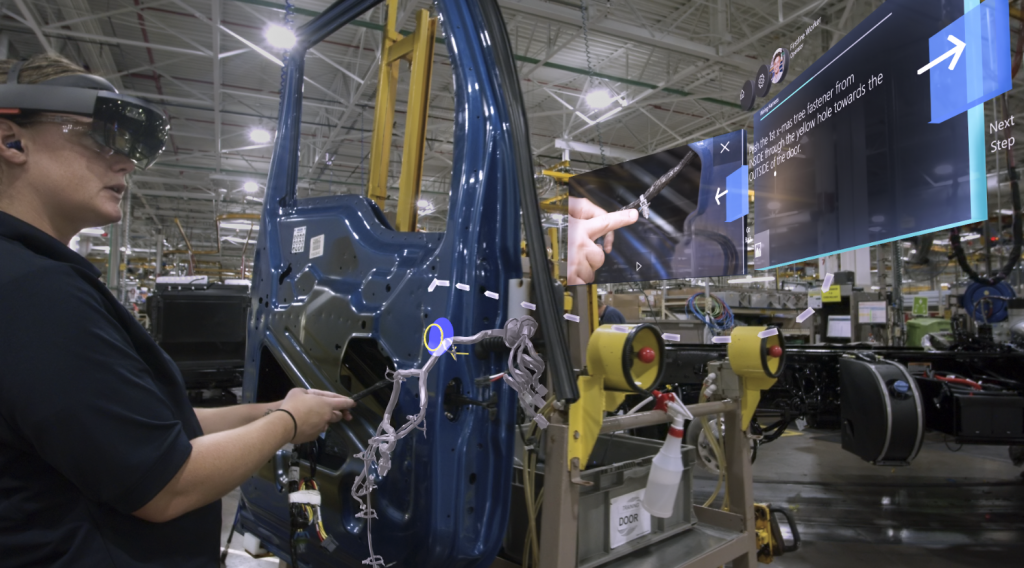
What AR/VR needs to do for greater adoption
“Perpetually on the verge of a breakthrough.” That might be the phrase that comes to mind when describing the journey of augmented reality (AR) and virtual reality (VR) towards widespread adoption in industrial settings.
Over the past two decades, there have been several moments when AR/VR seemed like it was ripe to explode. But while there have been some scattered pilot projects and small proofs of concept involving a handful of users, we haven’t really seen the technology become mainstream. It’s not something that most companies are using broadly, or that most individuals are even necessarily familiar with beyond “Isn’t that the Pokemon thing?”
Given its legitimate potential, what are the barriers that are standing in the way of widespread adoption of AR/VR, and what should the industry as a whole be focusing on to try and remove those barriers?
Start with the User Experience
At the moment, user experience (UX) should be near the top of the list. When these technologies were first designed, they sprung more from a spirit of exploration and pushing the boundaries of what technology could do. There was less of a focus on the human being who would actually be using the technologies.
As a result, there’s significant room for UX improvement, and in areas like VR headsets, progress is being made. Frame rates are improving, and the hardware is becoming less clunky and easier to wear for extended lengths of time. Put another way: the VR hardware developers are aware of the issues, and they’re working on it. They’re not standing still.
AR, meanwhile, has UX challenges of its own, starting with the fact that the human arm quickly gets fatigued if it has to hold up a smartphone or tablet for more than a minute or two. Humans, understandably, don’t want to have to use their bodies in unnatural or tiring ways just to experience the benefits of AR.
The good news is the hardware side of the AR industry has received the message. They’re actively developing other hardware alternatives besides mobile devices — witness the continuing iteration and enhancement of theMicrosoft HoloLens. As a head-mounted display, the HoloLens is able to nimbly sidestep the fatigue and awkward body mechanics associated with holding a mobile device out in front for too long.

UX, by the way, extends to data preparation. If someone has to sit down andmanuallyprepare CAD data for use in AR/VR, that’s not a terribly good user experience. If AR/VR hopes to be widely adopted, that step of the process needs to be fast, robust, and automated.
To get there, however, AR/VR needs more standardization across the industry. What we’re seeing now is a bit like what we saw with IoT a few years ago, where all the different players have their own initiatives, and the field temporarily becomes a bit of a Wild West. In early tech, that’s just what happens: Everyone’s spinning up their own APIs and standards.
Again, however, we have reason to be bullish on the future of AR/VR because what always eventually happens in the tech development lifecycle is that a winner emerges around standards and frameworks — and this makes things easier for everyone, providing some “common ground” that helps the field move forward.
Make the content relevant
For all the talk of hardware and user experience, let’s not forget content. It needs to be relevant.
This is especially the case if the hardware and/or user experience is still ironing out some kinks: The use case or the value that the AR/VR application provides must be even more prominent and even more valuable.
Achieving this goal requires some creativity. The industry needs to ask itself “what can we do with this technology that we can’t do with other technology?” so that it can really have a completely new perspective on the content that it delivers.
Of course, lots of people are just getting their feet wet and experiencing AR/VR for the first time — so they need to learn to walk before they can run. But we have every reason to believe that with this growing familiarity, there will be a corresponding increase in creativity.
While it did seem for some time that AR/VR was a technology looking for a problem to solve, we are increasingly bumping into well-defined use cases. Industrial customers are recognizing that there are certain scenarios — whether on a factory floor, or on a construction site — where it would actually be highly useful to have content available to them via AR and VR, and that it would help them make decisions faster and do their jobs more effectively.
Beyond manufacturing and construction, there are sectors like mining that could also benefit greatly from AR/VR in a number of scenarios.
For example, say a mine is based in a remote desert in Chile, but the mining company’s executive team is based in London. If 3D data of the mine has been collected, the executives can simply strap on a VR headset and experience that mine in a much more vivid manner than text descriptions, photos, or even video footage ever could. The same benefit applies to company shareholders or potential investors who want to “visit” a mine to see what they’re putting their money into — all without having to travel halfway across the globe to the hard-to-get-to locations where mines are typically located.
Aside from the business end of things, the ability to “stand” in the mine, turn around and get a 360 degree view, and really understand the full state of the mine could be very useful for improving decision-making in the event of a crisis situation like a cave-in or some other disaster. The foreman who is present on site could notify the executive team of the disaster, and the executives could then use VR to more fully understand the situation on the ground and the extent of the damage, helping inform how best to proceed.
AR increasingly has a role to play as well, with the development of items like smart helmets that can overlay information onto mine surroundings. People are already required by law to wear a helmet inside of mines, so AR-equipped helmets are a natural fit — and they provide a good platform for compelling mine-specific content to be built off of.
From factories to construction sites to mining operations, there is plenty of room for AR and VR to lend a hand in industrial settings. Fortunately, the content is increasingly responding to these market needs, creating a virtuous cycle of technological advancement.
The Tipping Point?
Lots of big names — including Google, Apple, Facebook, and Microsoft, to name a few — are heavily investing in the belief that the barriers around AR/VR adoption are being resolved and that this is an area that is poised for a big breakthrough moment. AR/VR has already made significant inroads over the past couple decades and has a solid foundation to build upon.
Focusing on just two main areas — the user experience on the hardware side of things, and the content itself on the software side — can help accelerate its forward momentum and push it to the next level.
In this way, AR/VR can finally go from being a technology that is perpetually on the verge, to one that has finally reached a tipping point.
Originally published athttps://www.designworldonline.comon March 1, 2021.



 By Ron Fritz •
By Ron Fritz •